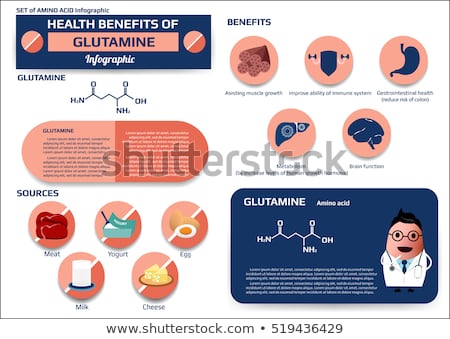What Is Bone Broth
By Dr. Ashraf Girgis ND.
Published 2018
|

I was recently giving a talk about inflammation, during which the issue of bone broth for patients with scleroderma came up. After the talk, one of the participants approached me to ask if bone broth can lead to further increase in collagen production – therefore actually hurting patients with scleroderma (who suffer from a higher-than-normal production of collagen). The question prompted me to write an article about bone broth. I hope this helps all individuals who havequestions regarding bone broth, whether suffering from scleroderma or not.
|
|
|
|
What is bone broth?
Bone broth most likely originated in Iran (since ancient Iran is where animal husbandry and farming started 10,000 years ago). In Iran, making stew with meat and bone is very common, as it now is across the world. The most famous stew is called Dizi (ab kooshet), meaning water and meat. It is a delicious stew made of pieces of lamb and fat over the bone (apologies to our vegans) cooked with garbanzo and kidney beans, potatoes, onion, and garlic. The stew is spiced with turmeric and seasoned mildly with salt and pepper, and is often eaten with bread (barbari or sangag bread), as well as onion, pickles, parsley, fresh cheese, and seasonal herbs with fermented vegetables called torshi. (Fermentation also likely started in ancient Iran as well, as a way to keep vegetable produce and meat longer without refrigeration.) The meat, bone, and fat are cooked the entire day (5-6 hours) in a small stone pot, like the ones used in ancient times. But, getting back to question, what is bone broth? And what is the science behind its health benefits?
Bone broth, as its name implies, is broth made from the bones and cartilage of lamb, chicken, or beef.The bone is cooked for hours so that it releases it minerals and nutrients into the broth: this is the reason for bone broth’s many health benefits. Despite its many health benefits, claims that bone broth’s collagen may make our skin younger are most likely due to its all nutrients and vitamins etc .
Once bone broth is digested, our digestive tract turns it into amino acids, nutrients, and minerals: it does NOT remain a collagen. Therefore, concern about bone broths increasing collagen level is irrelevant for patients with scleroderma.
Bone broth is also the base for all kind of soups. In other words, when you buy any broth(unless it is specified vegetarian), it is made of this combination of meat and bone. But what is the composition of bone broth? Why it is so important in the healing of patients with leaky guts? Bone broth, once broken down by the digestive system, contains many amino acids, vitamins, and minerals which are very beneficial, especially for patients who have inflammatory diseases. These broken-down contents are:
|
 |
|

|
1. Glutamine,
Glutamine is an amino acid. It is produced by the body, but sometimes the body is unable to produce the amount of glutamine it needs to perform many of its functions. Therefore, glutamine is considered a “conditionally essential” amino acid. There are two types of glutamine: L Glutamine and D glutamine. L Glutamine is the most abundant amino acid in our body. However, in conditions of high catabolic stress (where the molecules break down into smaller pieces), surgery, trauma, or sepsis, there is a need for extra glutamine. L Glutamine has many functions, such as providing fuel for the small bowel mucosa, fuel for the metabolism, repairing
and maintaining the gut barrier functions, and regulating cell proliferation [3]. D glutamine’s function is very much like that of L glutamine, but its molecules are shaped differently. L Glutamine is the form found in food and supplements.
Bone broth is suggested in patients with inflammatory diseases because almost all patients with inflammatory diseases have what is known as “leaky gut” or gut permeability (5). This leads to loosening of the gut tight juncture, allowing bacteria and bigger pieces of undigested food to pass through the wall juncture into the blood stream. Creating an inflammatory response. L glutamine plays a very important role in the preservation of the gut barrier and in the integrity of the epithelial tight junction (4).
|
|
Glutamine is also critical for people with autoimmune diseases. Not only does glutamine promote many functional activities of immune cells, such as T-cell proliferation and B-cell differentiation, but evidence also indicates that the increase of gut permeability described above can interfere with maintaining gut homeostasis and the immune system. The gut barrier consists of two layers, an inner and an outer layer.
The inner layer is firmly connected to epithelial cells and does not allow bacteria to filter through; it keeps the surface free of bacteria. The outer layer creates an external anatomical barrier. Together, these two layers play a fundamental role in homeostasis of a highly colonized colon. Glutamine has many other health benefits, but its importance in bone broth is primarily due to its role in repairing the gut wall. This is why bone broth is often suggested for patients with autoimmune diseases.
|
 |
 |
2. Magnesium
Bone broth also contains many minerals, including magnesium. Magnesium plays a fundamental role in energy production. Most of the magnesium inside the cell is found in the mitochondria.
But most importantly, magnesium helps with the structural development of bone and the synthesis of DNA and RNA. Inflammation plays a significant role in DNA damage; a study performed by Danish scientists showed that low magnesium in anxious mice resulted in a change in microbiome (6).
Additionally, low levels of magnesium are often seen in patients with gluten sensitivities. (This is a major cause of leaky gut and inflammation as well.) Bone broth contains a good amount of magnesium, therefore helping to improve the gut bacteria and improving the autoimmune process.
|
|
3. Glycine
Glycine is another very important compound found in bone broth. Glycine is a nonessential amino acid which plays several very important roles in health and wellbeing. Glycine is the precursor for several key important molecules, including creatine and glutathione. Glycine is also important for nutrition and metabolism, protecting the liver and the kidney by playing a detoxifying role.
80% of glycine is used in protein synthesis. It also acts as a neurotransmitter in the central nervous system. As such, glycine impacts food intake, behavior, and the body’s overall homeostasis (12).As a neurotransmitter, glycine also plays many roles, including antioxidant, anti-inflammatory,
and immunomodulatory functions. In rats, symptoms of arthritis such as edema and ankle swellingwere reduced by glycine supplementation (11).
|
 |
 |
In addition to regulating immune response, glycine plays a crucial role in growth, development,and metabolism in humans and other mammals (11). It is essential in controlling epigenetics (11). A minor shortage of glycine is not detrimental to the health, but a significant shortage can cause failure in nutrient metabolism and the immune system (11).
Glycine has other enormous health benefits, including aiding the removal of alcohol from the stomach before it reaches liver and some demonstrated anti-cancer properties via its prevention of cell proliferation and propagation (11). However, supplementations in high doses can be very toxic and caution is advised. Glycine can be found naturally in protein rich foods such as bone broth, legumes, fish, dairy, and meat.
|
|
4. Proline
Proline is an amino acid which constitutes 30% of the protein in our bodies; this is 1/3 of the amino acids in collagen. As such, proline is the most needed amino acid in our bodies. Proline is very unique in its ability to help maintain cell structure and other functions in the body and plays an important role in
wound healing (Barbul 2008). Emerging data also indicates the importance of proline as a regulator of cell metabolism and physiology.
L-Proline is one of the twenty DNA-encoded amino acids. It is important in the functioning of joints and tendons, and it is also considered a micronutrient. It belongs to the glutamine family and it is one of 20 amino acid building blocks of protein. Proline is a non-essential amino acid which is synthesized from glutamic acid (15).
|
 |
 |
Other constituents in bone broth are vitamin K2, Vitamin A, Zinc, and Selenium. It also contains calcium.
(Patients with inflammatory bowel disease or IBD often have low calcium levels, so bone broth can be helpful
in these individuals). The connective tissue of bone broth also contains glucosamine, chondroitin, and
collagen that is broken down to gelatin once it is cooked.
|
|
So what is the conclusion? Bone broth is a wonderful food to include in your cooking, full ofbeneficial nutrients. It makes an excellent soup, especially if some vegetables and legumes can be added. While it is important to understand that some bone broths may contain traces of toxic chemicals, overall it is very beneficial, specifically in patients with inflammatory diseases. While there is no research to show its impact in patients with scleroderma, it has powerful gut healing benefits.
Like everything else, moderation is key with bone broth. It is good to consume in reasonable amounts. As always, make sure to consult your doctor before making any permanent dietary changes.
Thanks for visiting www.curenaturally.org. For organizing a talk by Dr. Girgis please call curenaturally.org. If interested in buying books for your organization or have any other issues, feel free to leave a message for Dr. Girgis at 616-777-0608 or email her directly at contactcurenaturally@gmail.com.
|
 |
|
|
|
Additional Articles

Feeling Younger Than Your Age Could Be a Good Sign For Your Brain Health, Scans Suggest
Read More
|

Is Inflammation the Holy Grail of Aging?
Read More |

How To Preserve Your Beautiful Brain
Read More |
|
|
|

Diseases and the Importance of Bacteria Balance in the Gut.
Read More
|

What are alternative treatments for diabetes?
Read More
|

How To Lower C-Reactive Protein
Read More
|
|
|
|
|